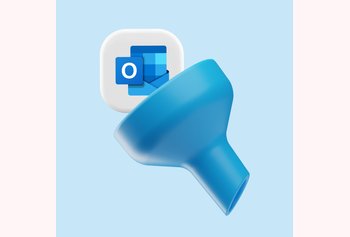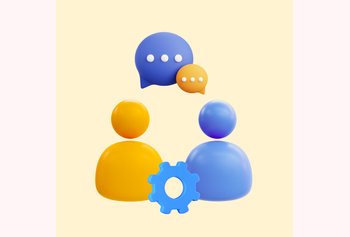10 Ways To Enhance Your E-commerce Customer Experience

Table of contents
You might have noticed many e-commerce companies subtly bragging about their ‘365-day return policy’, ‘home try-on program,’ ‘7-day free trial (no credit card needed)’ option, or ‘shop with a specialist’ feature on their app.
The most important takeaway from all these observations is that having great products or offering the lowest price isn’t enough. You need something extra to keep customers coming back for more.
And that’s the customer experience (CX). Take H&M, for example. The fashion brand uses Instagram Shopping to promote styles directly from its posts, making it easy for people to shop while browsing their feeds. It allows customers to explore live consultations for a more personalized shopping experience.
This is just one example. If you notice, more and more e-commerce brands are investing in the ‘experience’ they provide, and for good reason. A study by Gartner (via CMSWire) found that CX drives over two-thirds of customer loyalty, more than brand and price combined.
So, how can you improve your e-commerce store’s customer experience? How do you turn visitors into customers and those customers into loyal advocates?
Table of Contents
- Top 10 ways to enhance customer experience in e-commerce
- 1. Personalize the shopping journey
- 2. Streamlining the checkout process
- 3. Optimizing for Mobile
- 4. Provide exceptional customer support
- 5. Create engaging product pages
- 6. Implement a loyalty program
- 7. Leverage user-generated content (UGC)
- 8. Offer seamless returns and exchanges
- 9. Personalize post-purchase communication
- 10. Continuously gather and act on feedback
- Some more examples of e-commerce companies that stand out for their experiences
- Win customer trust by creating compelling e-commerce customer experiences
Top 10 ways to enhance customer experience in e-commerce
1. Personalize the shopping journey
Personalization makes the shopping experience smoother and more enjoyable. Think about it: When you receive recommendations and content tailored to your interests, you feel understood and valued.
That’s why personalized experiences lead to higher conversion rates. In fact, 60% of consumers report that theywill become repeat buyers after a personalized purchasing experience. But how do you personalize the customer experience? What are some strategies that you can implement for this? Let’s find out!
Use data to tailor recommendations
Examining past purchases, browsing history, and demographic information allows you to offer specific recommendations based on your customers’ needs.
For example, Amazon uses machine learning models to suggest products based on items customers check out or purchase. Moreover, the “Related items bought by customers” feature encourages additional purchases by displaying related items.
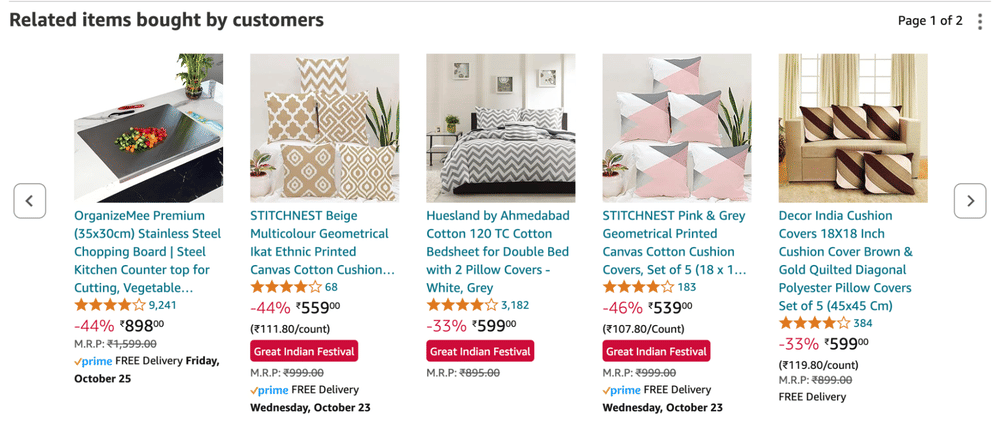
Implement dynamic content
Dynamic content refers to web elements that change based on user behavior and preferences. This can include personalized home pages, banners, product listings, and promotional offers that adapt to individual shoppers navigating an e-commerce site.
For instance, Spotify does this expertly when creating storefront playlists. At log-in, users are greeted by the platform’s custom playlists like “Daily Mix” and “Release Radar.” These playlists are auto-assigned by analyzing the user’s listening records. Furthermore, Spotify has dynamic content in its user interface by tailoring the home screen to the user’s preferences.

Recommended reading:Delivering Personalized Customer Service: 5 Tips You Should Try
2. Streamlining the checkout process
The one thing that frustrates me the most is complicated and lengthy checkout processes. A lot of times, I abandon the cart and get distracted by cat videos on YouTube. But I’m not the only one.
22% of US online shoppers have abandoned an order in the past quarter due to a “too long/complicated checkout process.” So, how do you streamline the checkout process and ensure your customers don’t drop off at this critical point?
Offer guest checkout
Many customers hate signing up for an account if they want to complete their purchase. Guest checkout allows customers to make purchases without creating an account on the e-commerce site. Amazon offers a simple guest checkout option, allowing customers to shop without creating an account. This is especially helpful for first-time buyers who want to avoid committing to an account.
Providing multiple payment options
Different customers would want to pay in different ways. Some might want to pay via credit card, some via debit, and others prefer cash on delivery. The bottom line is that you must provide multiple payment options to cater to a broader audience and instill a sense of security and convenience.
Zalando, a popular online fashion retailer, lets customers pay via various means, including credit/debit cards, PayPal, and even local payment options like bank transfers in different countries. This flexibility allows customers from various backgrounds to complete their purchases easily and confidently.
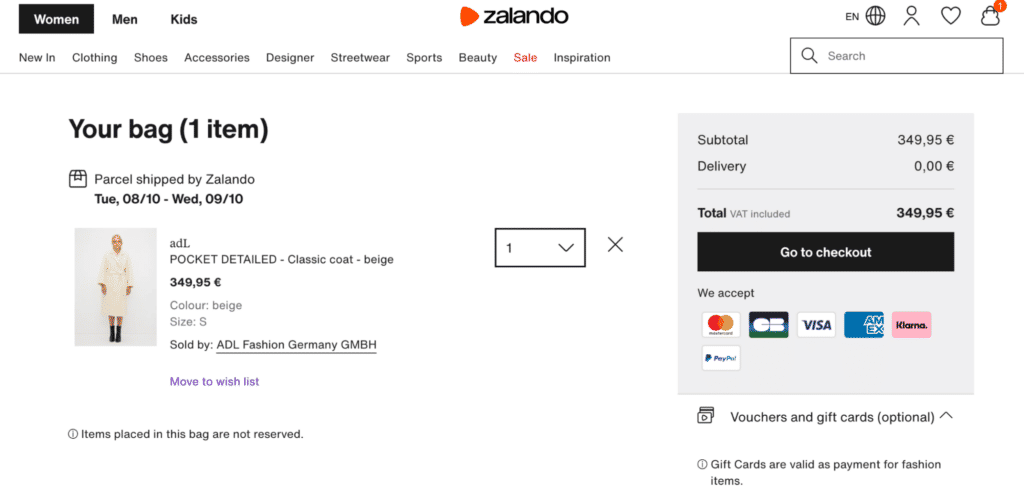
3. Optimizing for Mobile
Almost 49% of online shoppers use their mobile devices to check and compare prices before purchasing. As more and more consumers turn to their smartphones for shopping, optimizing the e-commerce customer experience for mobile has become crucial. Here’s how you can do that:
Make your website design responsive
Having a responsive design would mean that your e-commerce website automatically adjusts its layout and content based on the device’s screen size. A few things you might need to keep in mind include:
- Ensure the layout is fluid so elements resize proportionally to fit the screen. Images should also scale appropriately without losing quality.
- Similarly, menus should be easy to access and navigate with touch gestures, minimizing the need for excessive scrolling or zooming.
For example, Apple adapts to various screen sizes and devices, ensuring users have a consistent and engaging experience. It implements adaptive UI components that change based on the device.
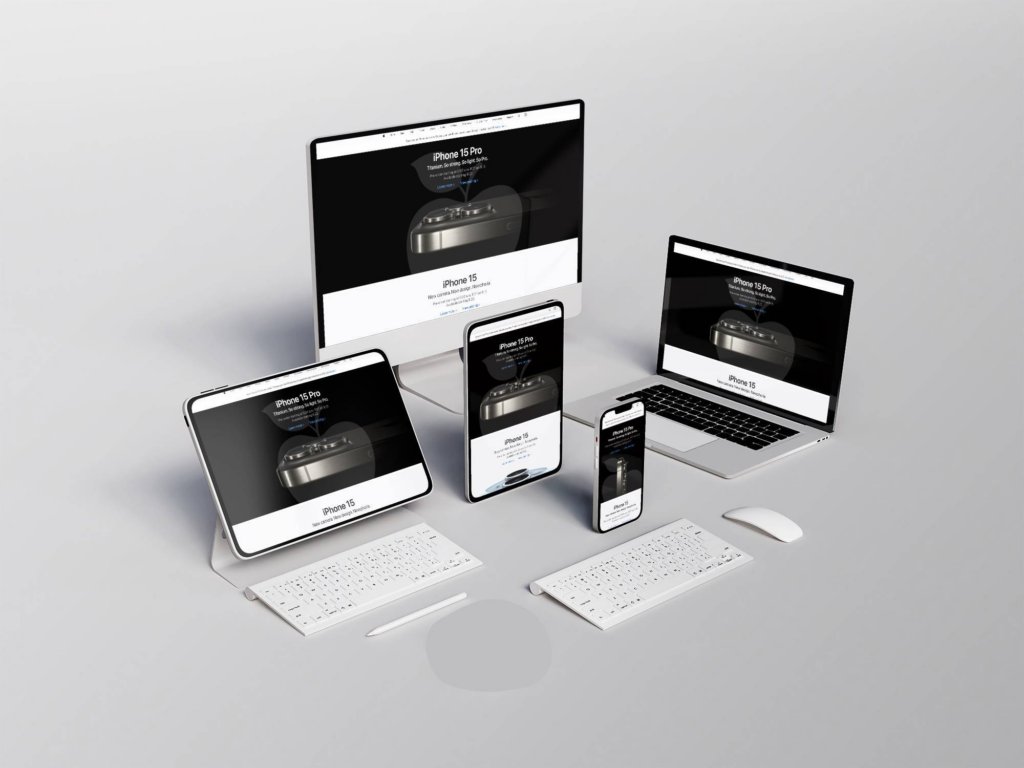
Mobile-specific features
Leveraging mobile-specific features can also improve customer experience and streamline purchasing. For example, push notifications can inform customers about special offers, order updates, or personalized recommendations based on browsing history.
At present, e-commerce is becoming increasingly popular for Augmented Reality. Now, with AR, customers can virtually try on clothes, makeup, or accessories and even see furniture and decoration in their homes by holding their PC monitor up to the intended spot. As a successful example of Augmented Reality (AR) in use, this company makes its IKEA Place app the perfect view for customers. It allows them to effectively place furniture and household items in their home using AR.
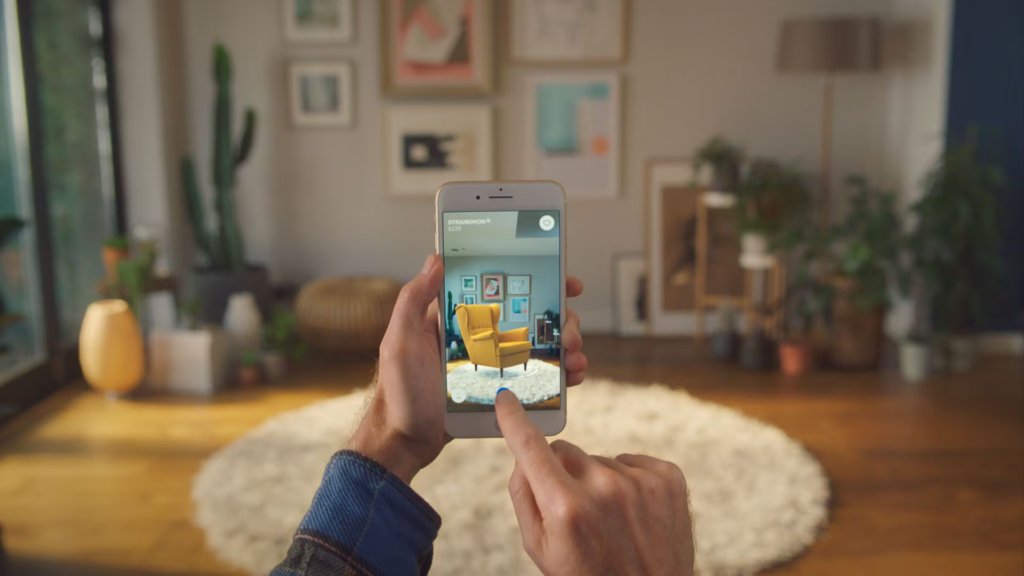
4. Provide exceptional customer support
Did you know that 72% of customers switch companiesafter a single negative experience?
This is why providing excellent customer service is critical.
But how do you ensure that every support interaction leaves the customer satisfied? Let’s explore some ways. Let’s explore some ways:
Give your support staff more autonomy
A lot of times, support agents get stuck between an angry customer and a hard place. They often have to go through multiple rounds of approval before they can give customers what they want. This also means additional effort from the customer’s end, which involves talking to multiple support agents and explaining the same issue several times.
A better approach in this scenario is to empower your support teams to resolve issues quickly, even going beyond standard company policies when necessary.
Take Ritz-Carlton, for example. The famous hospitality brand allows employees to spend up to $2,000 to resolve customer issues without managerial approval, allowing them to handle dissatisfaction quickly.
Offer omnichannel support
Customers want to reach your brand through their preferred channels. This choice allows them to seek help based on the nature of their issue. For example, 60% of customers prefer web self-service for sales transactions, highlighting the demand for self-service options in the purchasing process.
So, what do you do in this scenario? If I were in your place, I’d invest in an omnichannel support system. What does that do? Well, it ensures that your company is present for customers across multiple channels, such as social media, email, chat, in-store, and phone. The aim is to create a seamless experience for customers and make it easy for them to reach out to you in a way that’s most convenient and comfortable for them.
Many customer service tools can help you achieve this. Hiver, for instance, allows you to respond to customer inquiries from various channels – email, chat, WhatsApp, and phone – without leaving your inbox. The platform ensures that all customer data and conversations are unified, reducing the need to switch between tabs.
Recommended Reading: How To Deliver Great Customer Service: 10 Tips with Real-Life Examples
5. Create engaging product pages
Your product pages are where buying decisions are made. By providing detailed product information, user reviews, and image and video overviews, customers have all the important insights needed to decide whether or not to buy something.
Well-designed product pages help eliminate consumer doubt and increase the conversion rate. In fact, 85% of shoppers said that product information and pictures are important in determining which brand to purchase. Here are a few tips to help you build engaging product pages.
Use high-quality images and videos
Customers rely on visuals to assess whether a product meets their expectations, primarily when they cannot touch or feel a product. Clear, detailed images from multiple angles help build trust and confidence in the product.
Videos go a long way. A product tour on your product page showing features and benefits can build trust and credibility. Apple does it best with its guided tours.
Detailed descriptions and specifications
A detailed product description ensures that customers know exactly what they’re buying. Highlighting features, benefits, and specifications like dimensions and materials helps reduce customer doubts. They also address common customer concerns around product functionality,durability, and comparisons with similar products.
Additionally, a well-written, detailed description enhances SEO (Search Engine Optimization),making it easier for your product pages to be discovered through search engines.
Pro Tip: Many brands use descriptions as an opportunity to build a story around a product. Take DailyObjects, for example: For something as simple as a laptop sleeve, the company creates a compelling narrative to convey the product’s value and how it makes the customer’s life easy beyond technical details.
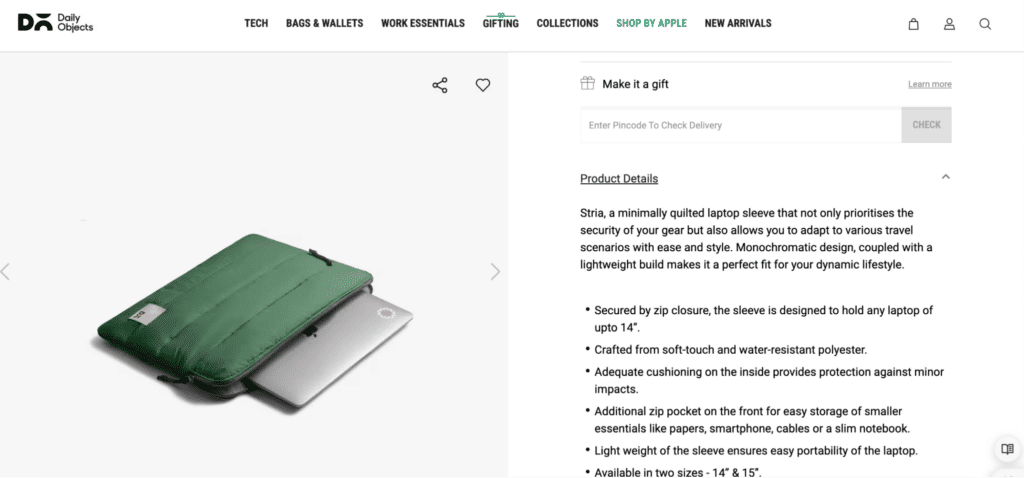
6. Implement a loyalty program
Improving the customer experience (CX) doesn’t end with creating pages. A lot goes into work once a visitor becomes your customer. And that usually involves turning that customer into a loyal advocate. This is where customer loyalty programs become important. Loyalty programs incentivize customers to return and make more purchases. Let’s dive into some of the critical components that make a loyalty program successful:
Tiered rewards
A tiered reward program increases rewards as one is able to reach various engagement levels of spending with its brand, thus making an individual want to increase high spend or frequency levels to get within higher-tier levels. This alludes to a feeling where customers feel exclusive and earn an achievement.
An example of tiered rewards in a loyalty program is Sephora’s Beauty Insider Program, which offers different rewards based on customer spending.
Here’s how it works:
Insider (Tier 1) – Spend $0 to $349/year:
Basic perks include a free birthday gift and let them earn points for each purchase that can be later redeemed for free products.
VIB (Tier 2) – Spend $350 to $999/year:
– Additional perks: All Tier 1 benefits, free custom makeovers, more points per dollar spent, and access to exclusive events and limited-edition products.
Rouge (Tier 3) – Spend $1000+/year:
– Top-tier perks: All Tier 1 and 2 benefits, but with even more exclusive offers, like free 2-day shipping, exclusive access to new products, invitations to private in-store events, and earning the most points per dollar.
Exclusive benefits
One more way that Companies can use to strengthen the emotional connection with customers is by offering exclusive benefits. These can include early access to limited-edition products ormembers-only events. This type of personalization and exclusivity enhances customer satisfaction and fosters brand loyalty.
Amazon Prime is an excellent example of this. Members who subscribe to Prime get access to perks like Free 2-day (or Same-Day) Shipping, Early Access to Lightning Deals, and Prime Day.
Modern consumers, particularly millennials and Generation Z, are unusually aware about environmental issues. As many as 87% of all consumers prefer to shop with companies that openly support social and environmental causes. When there’s sustainability in your loyalty programme, it will improve the user experience greatly. You could highlight where ingredients are sourced from, how your products are made or what standards you’ve got, like fair trade and B corp production status.
For example, Hello Match uses biodegradable or recyclable packaging materials, such as recycled cardboard or plant-based plastics, to reduce their environmental footprint. By clearly communicating their eco-friendly packaging and products, the company appeals to customers who prioritize sustainability in their purchasing decisions. This transparency builds trust and reinforces a positive brand image. They also mention this on their homepage

Recommended Reading: 7 Tips to Inspire Lifelong Customer Loyalty
7. Leverage user-generated content (UGC)
User-generated content (UGC) refers to any content—such as reviews, ratings, photos, or videos—created by customers rather than the brand itself. UGC acts as social proof, providing potential customers with honest, unbiased opinions about a product.
People are more likely to trust the recommendations of others who have used the product than completely buy into what the brand says. When prospects see many positive reviews for a product, it also makes them feel confident about their decision to purchase.
Customer reviews and ratings
Customer reviews and ratings are among the most influential types of UGC. Reviews often answer potential buyers’ questions about a product’s suitability or quality, helping reduce hesitation and boost conversion rates. For instance, a product that’s rated 4.5/5 with over 1000 reviews would come across as more reliable than another product of the same kind that’s rated 3/5 with just 20 reviews.
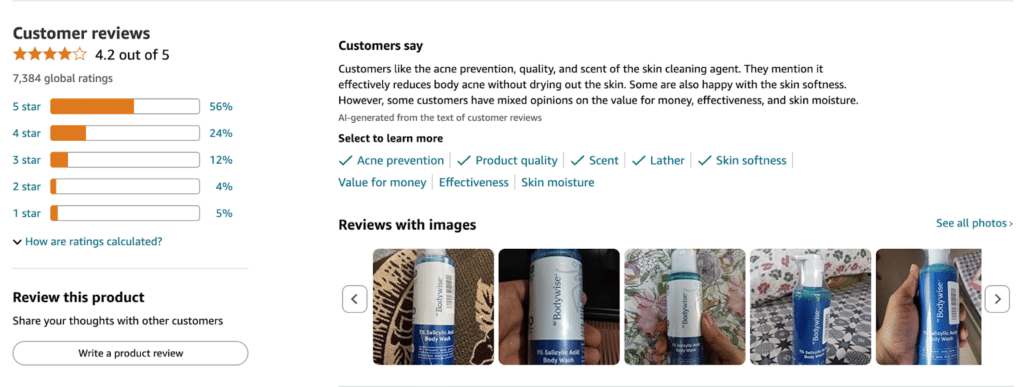
Social media campaigns
Social media platforms are increasingly becoming integral to the e-commerce customer experience. Integrating social media into your e-commerce site allows you to leverage UGC from platforms like Instagram, Facebook, and TikTok to drive customer engagement and sales.
Coca-Cola’s ” Share a Coke ” campaign is a great example of a brand leveraging user-generated content (UGC) to enhance customer experience and drive sales.
In 2011, Coca-Cola replaced its iconic logo on bottles with popular names, encouraging customers to find bottles with their names or their friends’ names and share them on social media. This campaign invited people to post photos and stories featuring the customized bottles, creating a wave of UGC. Fans shared their experiences on platforms like Instagram, Twitter, and Facebook, tagging Coca-Cola in their posts.
8. Offer seamless returns and exchanges
If your return policy requires the customer to parcel the product back and courier it to a specific address, I can confidently say that you’re already losing customers. Enhancing the e-commerce customer experience significantly hinges on the efficiency of returns and exchanges. And there’s data to prove it – 92% of customers are more likely to shop again if the returns process is simple.
So, how do you make it easy for customers to return products?
Write clear policies
Communicate the timeframes for returns and exchanges. Indicate how long customers have to initiate a return (e.g., 30 days from receipt) and how long it typically takes for refunds or exchanges to be processed. For instance, “You have 30 days to return your item for a full refund, and refunds will be processed within 5-7 business days after we receive your returned item.”
For example, Zappos is renowned for its hassle-free return policy. It allows customers to return items within 365 days for a full refund. They also provide prepaid return shipping labels, making it easy for customers to return unwanted items without incurring additional costs.
Simplify the return process
Ensure your return policy is accessible across various touch points—product pages, order confirmation emails, and FAQs. Consider placing links in prominent locations, such as the footer of every page, on product pages, and during the checkout process. Incorporate visuals like flowcharts or infographics to illustrate the return process.
9. Personalize post-purchase communication
Improving the customer experience after a purchase is as important as improving it before and during the purchase. One simple tip is to send a personalized thank you note instead of a generic thank you email. Don’t you feel special when you receive a note that is specifically addressed to you?!
Here are a few other tips you can follow
Order Updates
Addressing customers by their first name in the email subject line and body creates a personal touch. For example, “Hi Sarah, Your Order is on Its Way!” feels more engaging than a generic greeting.
Similarly, personalized information about the order, such as item names, quantities, and expected delivery dates, helps customers feel informed and valued. For instance, “Your new running shoes are scheduled to arrive on Friday” is more relevant than stating, “Your order has been shipped.”
However, providing personalized order updates doesn’t mean you must manually write emails to each customer. Instead, you can leverage AI tools to write email messages.
Companies like Warby Parker – a famous eyecare brand – automate its order update process by sending personalized emails when orders are placed, shipped, and delivered. Each email includes specific details about the order, such as the items purchased and expected delivery dates.
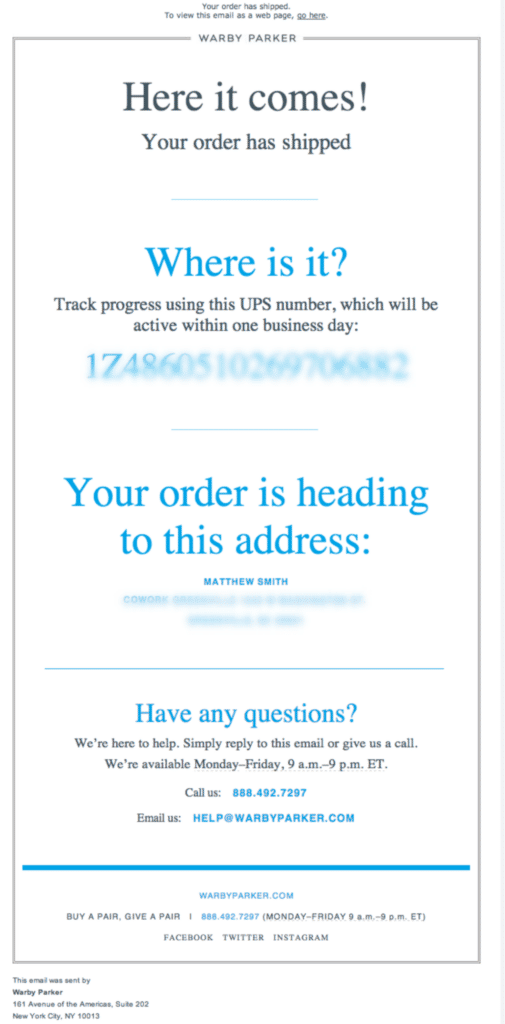
Tailored follow-ups
After making a purchase, follow-up messages by direct mail offer businesses an opportunity to deepen the customer experience. This entails customizing your customers’ purchase behavior and tailoring discount information complementary to their purchases’style as well-as effectively communicating those details.
Sephora employs a similar strategy by sending follow-up emails that include tips on using the products purchased and suggestions for complementary items. This enhances the customer’s experience with the product and drives further engagement with the brand.
10. Continuously gather and act on feedback
Listening to your customers first-hand gives you a better shot at being in their shoes and understanding what they expect. Seeking customer feedback and making data-driven adjustments is far better than relying on guesswork. Here’s how you can collect customer feedback.
Use well-timed customer surveys
Most e-commerce companies use surveys to collect feedback. However, one tip that can help you collect accurate feedback is to time your surveys well. For instance, you need to ask customers for feedback about the delivery experience as soon as they receive the product, not one day later. You can also conduct customer surveys after customer service interactions or once every quarter to assess overall sentiment.
For example, DHL includes a Customer Satisfaction (CSAT) survey in the delivery confirmation email after delivering a package. This survey asks customers about their delivery experience, making it easy for them to provide feedback at a moment when their experience is fresh.
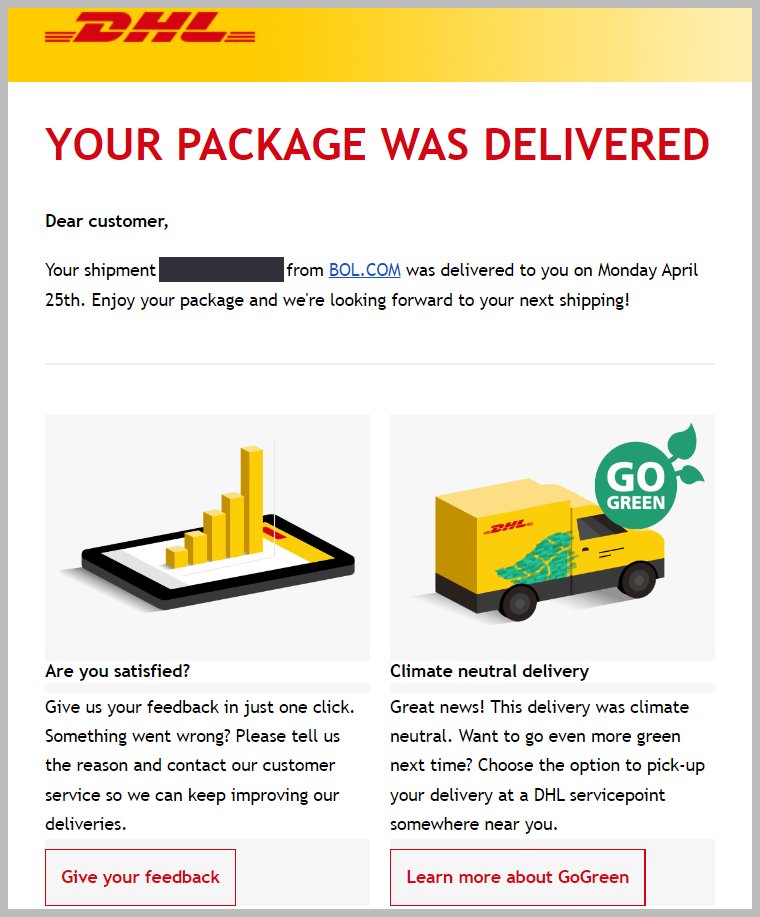
A/B Testing
A/B testing means comparing two versions of a webpage or email to determine which one performs better. This method helps test changes in a controlled environment and make informed decisions based on user behavior.
For instance, if an e-commerce site tests two different checkout button colors and finds out that one of them (let’s say, the green button) leads to higher conversions, they can confidently go ahead with the green one.
Some more examples of e-commerce companies that stand out for their experiences
1. Dollar Shave Club
In 2011, Mark Levine and Michael Dubin started Dollar Shave Club. They changed the razor industry by offering quality razors at a fair price through a subscription model. Their big break came when they made a funny video about people’s problems with expensive razors.
This new way of advertising helped them grow quickly. In 2016, Unilever bought the company for $1 billion. Their success shows how using humor and selling directly to customers can make a big difference.
2. Etsy
Launched from a Brooklyn apartment in 2005, Etsy revolutionized how handmade and vintage items are sold online.
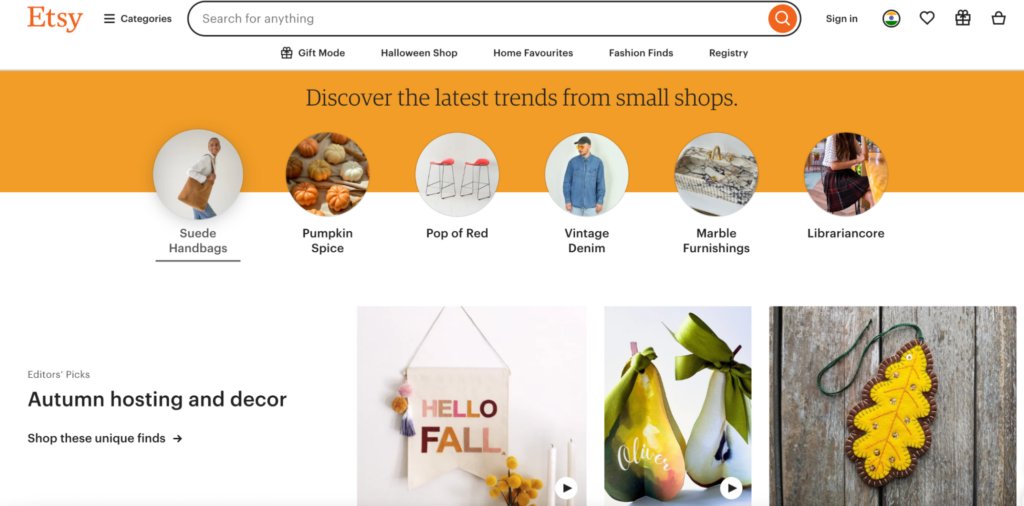
By providing a platform for independent sellers to showcase their crafts, Etsy fostered a sense of community among buyers and sellers. The platform’s focus on authenticity and unique products has led to over $13 billion in sales and millions of active sellers.
3. Walmart
Walmart has adopted voice commerce by partnering with Google to create a voice shopping feature. What does that mean? It means that customers can use Google Assistant on Google Home or smartphones to order items directly from Walmart’s online store.
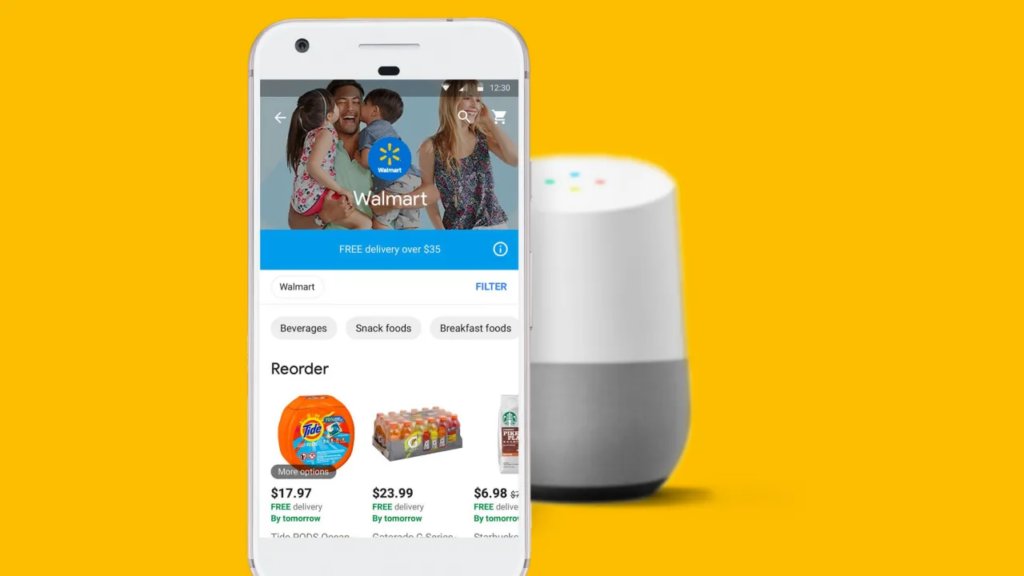
Customers can add items to their shopping baskets by simply speaking, “Hey, Google, add 1 liter of milk to my Walmart cart”. This partnership allows Walmart to tap into the growing voice commerce market and provide a frictionless shopping experience.
Win customer trust by creating compelling e-commerce customer experiences
As e-commerce continues to reshape the way we shop, enhancing customer experience has never been more critical. By implementing these 10 strategies, your business can meet and exceed customer expectations.
The e-commerce industry thrives on innovation, and companies prioritizing a superior customer experience will lead the pack. From streamlining your checkout process to offering proactive customer support, the future of e-commerce depends on a customer journey that’s not only smooth but also memorable.












